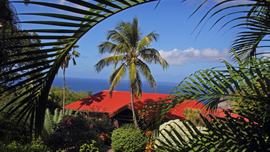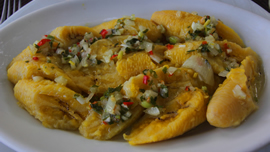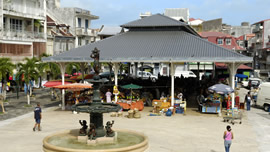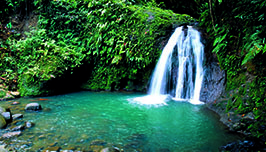
Diversity and traditions


WHERE TO STAY
More information
WHAT TO EAT
More information
WHAT TO BRING
More informationWHAT TO SEE?

BREATHTAKING SITES
The Guadeloupe archipelago was designated a Biosphere Reserve by UNESCO on 15th February 1993. Guadeloupe is one of only 25 Biosphere Reserves, designated as such for having one of the highest rates of biological diversity in the world. Its central zone is located in Basse-Terre. Home to over 300 tree species, it also counts 270 varieties of fern and 90 varieties of orchid. Its wildlife includes 28 species of birds, 11 species of mammals, 11 species of bats and one indigenous bird, the Black Woodpecker.
In the Grand Cul-de-Sac Marin Nature Reserve, the National Park controls a vast nature reserve closed off by the longest coral reef in the Lesser Antilles. With a myriad of different coastal features, le Grand Cul-de-Sac Marin boasts mangroves, swampy forests, grassy marshes, herbaceous marshes, humid prairies, salt licks, underwater herbariums, desert islands and sandbanks.
The National Park is also managing the ambitious project of returning the Antilles Manatee to the bay of the Grand Cul-de-Sac Marin. The Lamantin, a marine mammal listed as being in danger of extinction, disappeared from Guadeloupe’s waters in the 20th century. The National Park is aiming for this project to serve as a way of encouraging others to protect Guadeloupe’s rich natural and cultural resources.
Les Chutes du Carbet (the highest falls in the Lesser Antilles, reaching a total height of 245 meters) and La Cascade aux Ecrevisses welcomes over 200,000 visitors each year.
La Soufrière, at 1,467m, is the highest point in the Lesser Antilles and one of the most active volcanoes in this region. It can be reached by one of the many paths which wind up around its slopes and summit.
The mangrove swamp covers coastal areas in the tropics exposed to the tides. Four species of mangrove dominate this ecosystem: red, black, white and grey, forming a strange forest growing on stilts.
The Cousteau Reserve is located around the Pigeon islets. Commandant Jacques-Yves Cousteau filmed in these waters several of the scenes in his feature film “The Silent World” (Le Monde du Silence) in 1955. Fascinated by the site’s vast biological diversity, he encouraged the protection of the reserve – a task that was taken on by Guadeloupe’s authorities. Today the reserve is a must-see site for divers exploring the Guadeloupe archipelago.
